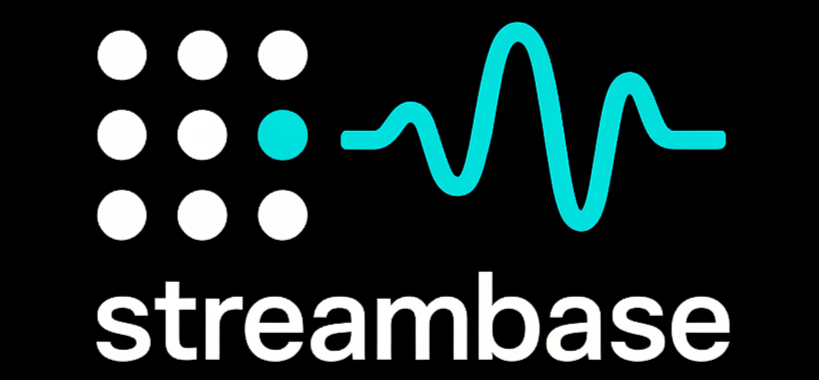The Rise of Web3 Streaming Platforms — Explained
Web3 streaming replaces (or complements) centralized video/music/social platforms with decentralized compute, storage, and distribution. It unlocks new monetization models (tips, tokens, NFTs, pay-per-second), gives creators greater ownership, and can be more resilient to outages and censorship. Livepeer, Theta, Audius, Lens/Farcaster-native media, Streamr, IPFS/Arweave, and even token-native livestreaming on Pump.fun are converging into a new, programmable media stack. ACM Digital Library+5Messari+5thetatoken.org+5
Why now?
-
Exploding video+AI compute needs: Transcoding, real-time effects, and AI video understanding are compute-hungry. Decentralized GPU marketplaces (e.g., Livepeer) can lower costs and scale elastically. Messari
-
Creator monetization & ownership: Protocol-level earnings, community tokens, and direct fan relationships (e.g., Audius for music; SocialFi rails like Lens) let creators own their graph and revenue streams. docs.audius.org+1
-
Distribution & resilience: Peer-to-peer content routing and decentralized storage (IPFS/Arweave) can reduce single points of failure and improve censorship resistance for media. ACM Digital Library
-
New social+speculation formats: Token-native livestreaming (e.g., Pump.fun) blends entertainment with on-chain incentives—controversial, but undeniably attention-grabbing. WIRED+1


How Web3 streaming works (the stack)
1) Compute layer (encode/transcode/AI)
-
Livepeer supplies a permissionless marketplace for video infrastructure—orchestrating GPUs for transcoding and rapidly adding AI-video workloads (real-time creation, instant understanding). Builders tap a network instead of renting a single vendor’s fleet. Messari+1
2) Content delivery & last-mile distribution
-
Theta Network runs a decentralized edge network where nodes relay/serve video and earn TFUEL, targeting media and now AI cloud use cases. Think: crowd-powered CDN & edge. thetatoken.org+1
3) Storage / persistence
-
IPFS/Arweave provide object persistence and content addressing. Research and industry write-ups point to video as a natural IPFS use case, with benefits for availability and censorship resistance. (High-throughput live can still use hybrids with CDNs.) ACM Digital Library+2kaleido.io+2
4) Social identity & distribution
-
Lens Protocol (SocialFi) = user-owned profiles, follows, and media graphs that apps can read/write to—so your audience travels with you across clients. Great for distributing streams, clips, and patronage onchain. Lens+1
5) Real-time data and “streams of streams”
-
Streamr focuses on decentralized real-time data broadcasting. Projects can pipe telemetry, chat events, prices, or even live media metadata through a censorship-resistant pub/sub network; StreamrTV showcases the media angle. streamr.network+1
6) Vertical media protocols (music/video-first)
-
Audius is a decentralized, artist-controlled music protocol with tokenized incentives, grants, and community tooling for discovery and monetization—an existence proof for Web3 streaming at scale. docs.audius.org+2CoinMarketCap+2
7) Token-native livestreams (speculative media)
-
Pump.fun Live puts the stream at the center of a token page; creators drive engagement and trading in real time. Momentum here demonstrates programmable media + programmable markets, albeit with moderation and risk caveats. Bitget+2Cryptonews+2
What creators actually gain
-
Portable audiences: Your followers and content graph are composable (e.g., Lens), not locked to one app. Lens
-
Flexible monetization: Tips, NFTs, token-gated streams, subscription mints, pay-per-minute transcoding, revenue shares to node operators—composability lets you mix models. docs.audius.org+1
-
Lower infra lock-in: With compute (Livepeer) and delivery (Theta) as open networks, switching costs drop and experimentation rises. Messari+1
-
Resilience: P2P storage and multi-client social distribution keep content reachable even if one front-end goes down. ACM Digital Library
The leading platforms & what they’re best for
-
Livepeer — plug-in decentralized transcoding/AI video compute to slash costs and scale. Great for devs building live VOD apps or AI-video products. Messari+1
-
Theta Network — decentralized edge delivery + incentives (TFUEL); media & entertainment networks that want a Web3 CDN. thetatoken.org+1
-
Audius — end-to-end music streaming with Web3 discovery, artist control, and community engagement. docs.audius.org
-
Lens — own your profile & feed; distribute streams/clips across SocialFi apps; monetize via onchain primitives. Lens
-
Streamr — live data rails and decentralized pub/sub; pair with media apps for chat, telemetry, and interactive experiences. streamr.network
-
Pump.fun Live — token-native livestream pages tightly coupled to on-chain trading (high-risk, high-attention growth loops). Bitget+1
Real constraints & risks (read this!)
-
Moderation & safety: Token-incentivized streams can push edge-case content; Pump.fun even paused livestreaming previously amid safety concerns and later relaunched with new tooling—illustrating the need for robust policy + tooling. WIRED
-
UX & cost volatility: Wallets, fees, chain selection, and latency can still be rough for mainstream users. Hybrid Web2/Web3 architectures are common in practice. (Research on IPFS points to promise and trade-offs for high-throughput live.) ACM Digital Library
-
Regulatory uncertainty: Tokens, revenue-sharing, and financialized social features can trigger compliance scrutiny, especially when speculation is front-and-center. WIRED
What to build next (playbooks & ideas)
-
Creator-owned OTT: Use Livepeer for encoding + Theta for delivery; publish to Lens for distribution; persist on IPFS/Arweave; monetize via NFT season passes or token-gated live chats. ACM Digital Library+3Messari+3thetatoken.org+3
-
Interactive streams with real-time data: Pair Livestream video with Streamr channels for on-chain events, polls, and commerce that update overlays instantly. streamr.network
-
Music shows with on-chain fan clubs: Audius for discovery + Lens posts for distribution + collectible drops that unlock VIP audio rooms. docs.audius.org+1
-
Token-native programming: On Pump.fun, craft safer community incentives (e.g., transparent treasuries, clear roadmaps) rather than raw hype—then stream progress and product reveals. Bitget
Outlook: programmable media meets agentic AI
Expect agentic AI producers to spin up streams, route workloads across decentralized GPU networks, publish to open social graphs, and monetize autonomously via on-chain rails. Networks that merge AI compute + media distribution (e.g., Livepeer’s AI push; Theta’s “decentralized cloud for AI, media”) are positioning for exactly this. Messari+1
Bottom line
Web3 streaming isn’t just “Twitch but on a blockchain.” It’s a composable media stack—compute, storage, delivery, identity, and money—where you can mix and match open networks. The result is a new class of apps where audiences are portable, incentives are programmable, and creators actually own their distribution.

